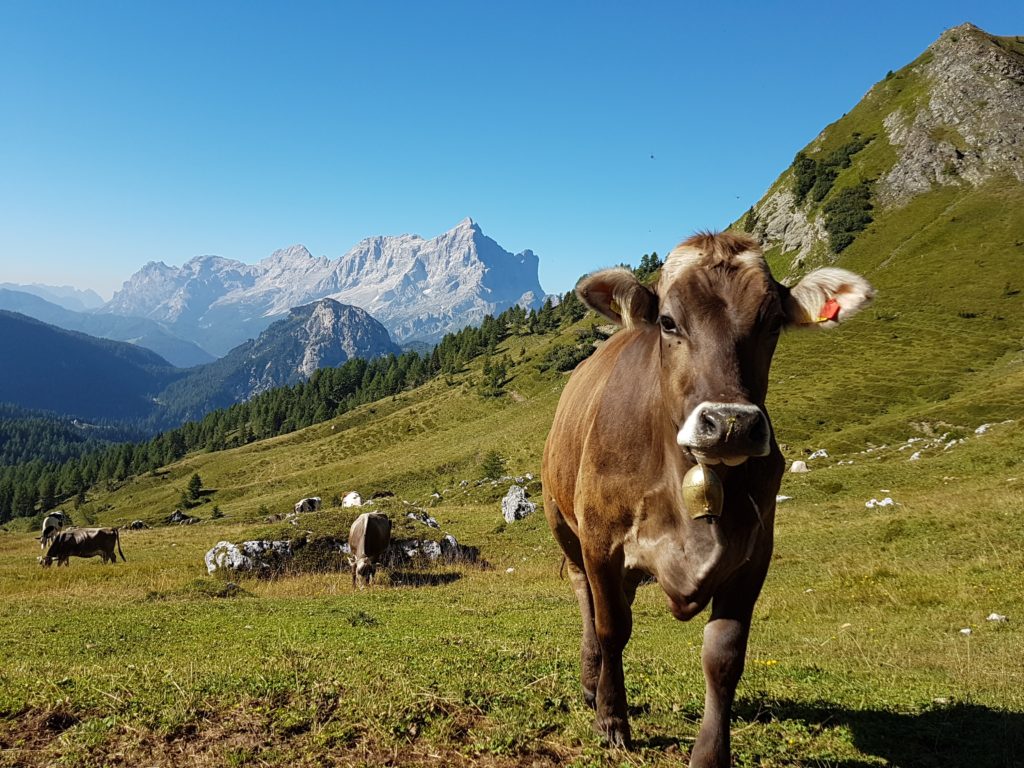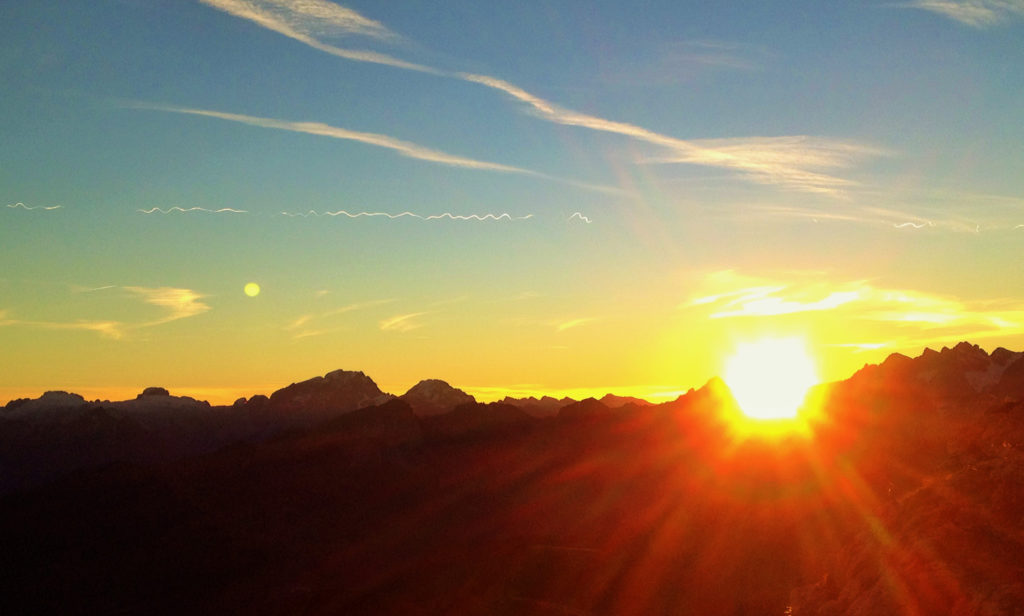Hiking in Val Pettorina is a real pleasure. This steep sided valley hides unexpected treasures, and only those dedicated enough to seek them out will be rewarded. Lets be frank – Val Pettorina has some tough walks, it’s not sure child friendly and you need to be prepared for small, less frequented paths – but that is also the appeal. The dense forests are cool and shady for the first few hundred metres of ascent until you reach the high meadows, where the angle slackens off and the views suddenly pop out.
Teeming with Gentians, Edelweiss and Saxifrage they are amongst the most beautiful of the alps. Climb further and you reach the dry, bright white and yellow screes beneath the rock walls of these mountains. The diversity of the landscape here makes for truly spectacular scenery which draws in hill walkers and mountain goers from all over the world. From the deep shady valleys to the desert like high altitude plateaus, there is something for everybody, and Val Pettorina’s varied Geology makes it even more special.
What to expect from hiking in the area
Val Pettorina as just mentioned is quite steep-sided. You need to be au-fait with moving over off-camber, rough terrain, on often faint paths – you will find less wide tracks here than elsewhere in the Dolomites and even the paths marked as major on maps are smaller, steeper and less obvious. In the upper valley around Malga Ciapela, the nature of the paths becomes more regular, although they are still often steep. They are less wooded and can provide excellent excursions.

When to come
Hiking in Val Pettorina is possible for most of the year, excluding the deep winter months, Mid December through to late March. During these times snow-shoeing or ski touring is more appropriate and many of the same routes are possible. The main season starts in June and continues through to Mid October. At both ends of the season, you could experience snow on the ground at higher altitudes or on north-facing aspects. If you plan on going high, make sure you have at the minimum micro-spike crampons to cross patches of hard snow and/or trekking poles, and if you think you’ll be hiking in areas with considerable amounts of snow or tackling snow-filled gullies, having a walking axe and a pair of crampons is advisable, as well as knowing how to use them. This can remain the case well into June. You are less likely to need these items in autumn which tends to be drier.

Gear
Hiking in the Dolomites is no different to most temperate mountain area in the world. Of particular note though during July and August is that it is essential, to take at least a waterproof jacket. The frequent afternoon storms will catch out even the most experienced hiker, and particularly on a hot day, the rain can be torrential. Think of it as a European Monsoon.
Boots or walking shoes are highly recommendable as smooth trainer soles provide little grip when on loose ground, the gravel and sand here provides the perfect medium on which to slip and slide. If you are a less experienced hiker we recommend a mid to full height boot with a stiff midsole. A mixed fabric and nubuck leather upper combined with a waterproof inner liner makes for a lightweight boot. Generally you will get what you pay for, the more expensive a boot is, the better quality the materials used will be and the better the last of the shoe. Aim to buy a product with as little internal foam padding as possible – this stays wet should you go in above ankle depth and generally means the boot has spent less time on a shoe last. In the long term this can hide problems with the comfort of the boot.
Here is a list of items you should consider taking with you:
- Walking boots or shoes
- A waterproof jacket and possibly trousers if you aim to walk in all weathers
- Good quality socks, like those made by Elbec
- A lightweight walking pack.
- A system to keep your equipment dry inside your rucksack, for example, a dry bag
- A map and/or GPS system. We recommend Tabacco Maps and the MyTrails app which offers free online mapping and GPS functions.
- Food and water, especially out of season when mountain huts are closed.
- A sun hat
- Warm clothing
- Sun Screen
- A small first aid kit
- Toilet paper and a bag to carry paper away with you (aswell as any other rubbish)